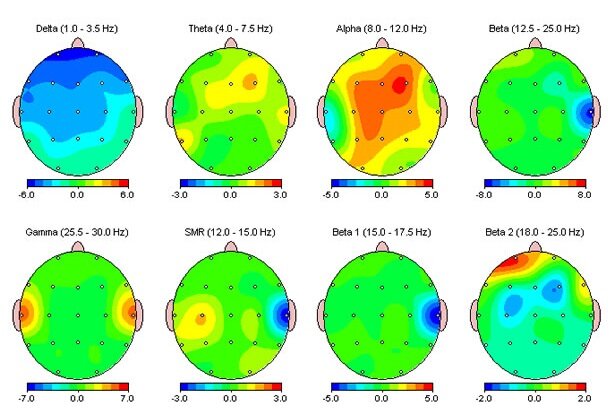
qEEG Brain Mapping
What is qEEG Brain Mapping?
An electroencephalogram (EEG) is a type of test that measures the electrical activity in the brain. In simple terms, the test measures brainwaves the same way an electrocardiogram, or EKG, measures the heart’s electrical activity. An EEG measures the electrical patterns, or “brainwaves", in order to identify the type and number of brainwaves that are present throughout the brain.
Quantitative EEG (qEEG) is the analysis of the digitized EEG and provides a “map” of the electrical activity of the brain. It does this by processing the recorded EEG activity from a multi-electrode recording and then comparing these patterns to what would be expected for individuals of the same age. The processed EEG is commonly converted into color maps of brain functioning called “brain maps” which allows us to identify areas in which an individual’s brain is not functioning optimally that would explain an individual’s specific symptoms or difficulties. Once these regions are identified, specific treatment protocols can be designed in order to address each patient’s particular needs.
While these maps cannot be used to diagnose or measure a patient’s progress, they are essential for developing specific and targeted treatment protocols.

